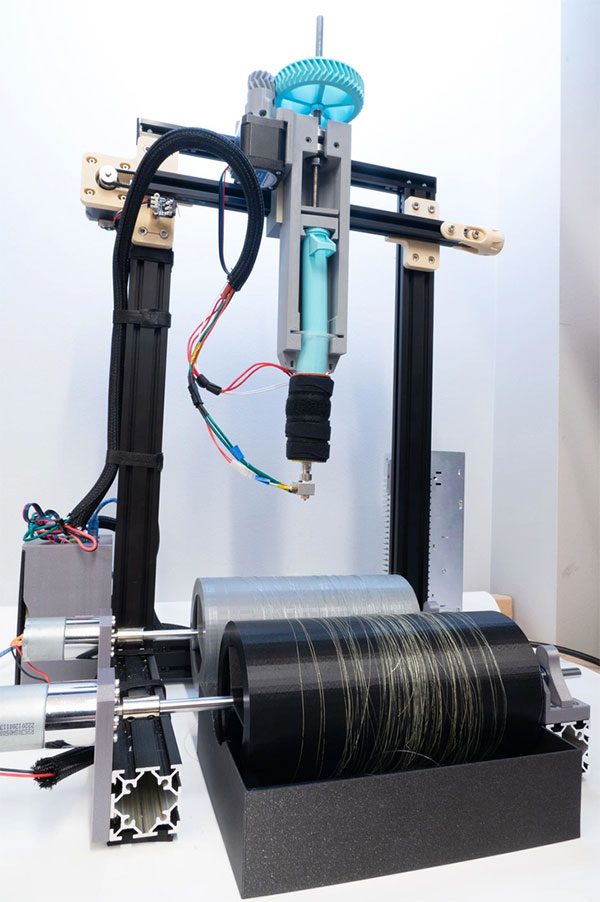When you no longer want to use this type of fabric, you can dissolve it and recycle the gelatin into more fibers.
Researchers and designers at the ATLAS Institute of the University of Colorado Boulder (USA) are pioneering a new direction for the future of fashion by creating a fabric that can dissolve in hot water and be recycled.

Biodegradable fibers from gelatin in various colors – (Photo: Utility Research Lab).
In a recent study, the team developed a DIY machine (do-it-yourself) that can pull fibers from sustainable materials like gelatin, according to an article in Techxplore dated June 17.
The team started with gelatin—a stretchy protein commonly found in the bones and hooves of many animals—because meat producers often discard large amounts of substandard gelatin each year to cosmetic and food companies.
The researchers decided to transform this gelatin into wearable material.
The team’s DIY machine uses a plastic pump to heat and extrude droplets of liquid gelatin. Then, two sets of rollers in the machine pull the gelatin into long, thin fibers.
The team’s “biodegradable fiber” resembles linen and can dissolve in hot water within a few minutes to an hour.
“When you no longer want these fabrics, you can dissolve them and recycle the gelatin into even more fibers,” said Michael Rivera, co-author of the study and a researcher at the ATLAS Institute.

Gelatin fiber machine costs only 560 USD to produce – (Photo: Utility Research Lab).
This research addresses the growing problem of textile waste worldwide. According to the U.S. Environmental Protection Agency, in 2018 alone, American citizens disposed of more than 11 million tons of textiles in landfills, accounting for nearly 8% of total municipal solid waste that year.
The research team also opens up new possibilities for the fashion industry. Their machine is small enough to fit on a table and costs only 560 USD to produce. The team hopes the machine will help designers worldwide experiment with creating their own biodegradable fibers.
Users can customize the durability, elasticity, and color of the fabric fibers.
The study was published in the journal Proceedings of the CHI Conference on Human Factors in Computing Systems.
Smart Textile Trends
This research comes at a time when fashion enthusiasts and others are pursuing the trend of “smart textiles.”
For example, the Levi’s Trucker Jacket, in collaboration with Google’s Jacquard platform, looks like a denim jacket but includes sensors to connect to smartphones. However, Rivera noted that this type of jacket is not recyclable due to the difficulty of separating denim from copper fibers and electronic devices in the jacket.
The team has created small sensors from gelatin fibers, cotton, and conductive threads, similar to the Jacquard jacket. They then soaked these fabric pieces in warm water, making it easy to separate the conductive fibers for recycling.


















































